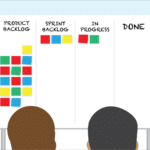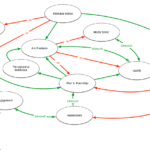Many people who attend Scrum training courses start with the impression that the Daily Scrum is the whole of Scrum. Others think the Daily Scrum centres on three questions (this was true a long time ago). This guide to the Daily Scrum meeting was created to address these misconceptions as well as answer common questions. […]
Work Environment
Forcing People Back to the Office
In December the Treasury Board of Canada ordered that, starting in mid-January, all employees would be expected to return to the office for two to three days a week. Among the stated goals were: Innovation, Creativity, Fairness, and Consistency. This all ties in well with the Agile Manifesto which includes the principle “The most efficient […]
Agile Bonuses – The Damage They Do
A design pattern is a description of a solution to a recurring problem. It outlines the elements that are necessary to solve the challenge without prompting the reader to address the issue in a specific way. Unfortunately, we also regularly see recurring patterns of ineffective behaviour. These are called Anti-Patterns. The following explores the common […]
Future Perspective for Change: Why Backcasting Helps Get You Where You Want to Be
When a product team starts work on a product, it’s important that they understand the vision. This is, as they say, a bit of a no-brainer since otherwise they might build something that completely misses the mark. In a modern Agile world, we’re expecting a mix of Product Management, Developers, ScrumMaster, the Customer and perhaps […]
Red-Yellow-Green Status Reports and Other Models – How They Should and Shouldn’t Be Used
Red-Yellow-Green status reports are a widely-used tool to help executives have a fast and simple understanding of the current state of a project through a visual model that makes it easy to spot patterns. Green means everything is good, yellow means there’s some risk, and red means the project is in serious trouble. Simple, right? […]
Scrum Anti-Patterns: Micromanagement
A design pattern is a description of a solution to a recurring problem. It outlines the elements that are necessary to solve the challenge without prompting the reader to address the issue in a specific way. Unfortunately, we also regularly see recurring patterns of ineffective behaviour. These are called Anti-Patterns. The following is an exploration […]
Scrum by Example – How to Handle Production Support Issues in Scrum
Whenever you are building and deploying a complex system, there are always going to be bugs, defects, and unforeseen problems with usability — commonly referred to as Production Support issues. Today, our ScrumMaster and their Team grapple with these issues, to help you understand how they affect a Scrum Team and what you can do […]
What Are the Limits of the Scrum Framework?
Frequently in workshops, I get asked, “Where shouldn’t we use Scrum?” The short answer is there are lots of instances where the Scrum framework doesn’t fit. However, to give a more complete and effective answer to this question, first we need to have an idea of why and when Scrum does work and what the […]







